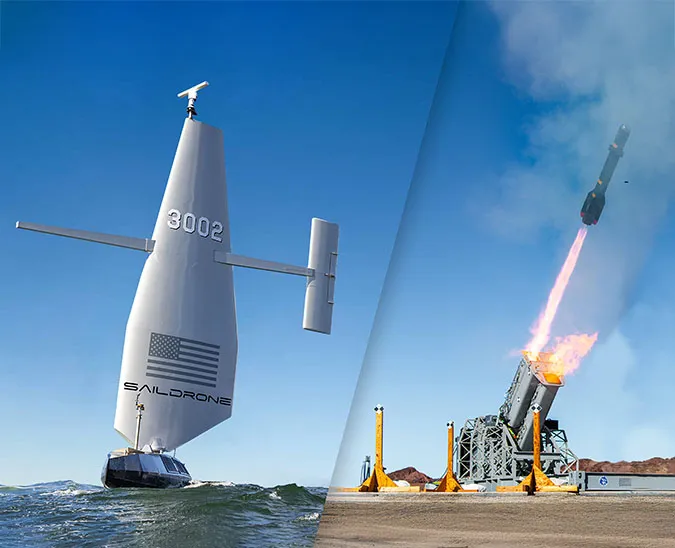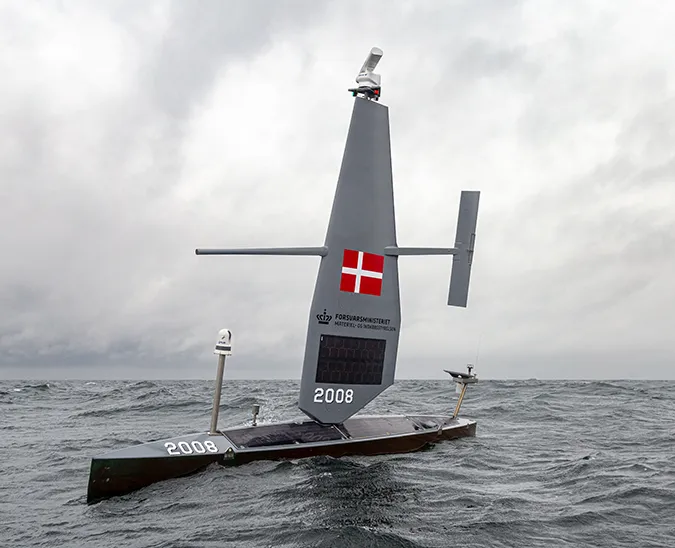Published on
Author
Saildrone has successfully completed a milestone demonstration in support of NATO’s Task Force X Baltic initiative, operating four Voyager-class uncrewed surface vehicles (USVs) in some of Europe’s most complex and strategically sensitive waters. The mission—led by NATO Allied Command Transformation (ACT), with support from NATO Maritime Command (MARCOM) and the Centre for Maritime Research and Experimentation (CMRE)—sought to test the real-time operational integration of autonomous maritime systems into NATO’s decision-making and response workflows.
From June 16–27, 2025, four Saildrone Voyagers maintained a persistent presence in the Gulf of Finland and the western Baltic Sea, regions that are increasingly critical for NATO and European security. Saildrone was the only platform that required no on-site human intervention during the exercise. The Voyagers delivered 24/7 wide-area maritime domain awareness, detecting and tracking hundreds of vessels daily, despite challenging conditions, including gale-force winds and two-meter seas. Saildrone’s consistent reliability ensures that warfighters remain focused on critical duties without the need for operational support interruptions.
“We are honored to have participated in the NATO Task Force X Baltic Initiative. After eight years of operating Saildrone USVs in the Bering Sea, we are well placed to deal with the conditions in the Baltic Sea, which has very similar latitude, water depths, and sea conditions,” said Saildrone founder and CEO Richard Jenkins. “Task Force X Baltic has been fantastic to work with, and we look forward to future missions with NATO partners.”
While the exercise included simulated “red force” targets, the Saildrone Voyagers also made real-world detections, identifying non-cooperative vessels, including members of the so-called Russian “shadow fleet” and military assets operating without AIS. The ability to detect these “dark targets” in real time—using a combination of long-range radar, AIS tracking, and onboard analytics—demonstrates the strategic value of persistent, autonomous surveillance in modern naval operations.
NATO Maritime Command on X.
One of the most compelling aspects of the demonstration was the successful coordination between the Saildrone USVs and high-speed unmanned response vessels. Upon detection of a vessel of interest, the Voyagers transmitted the data in real time to NATO operators, enabling rapid response and investigation. This layered autonomous structure—combining wide-area sensing with tactical assets—offers a scalable and resilient solution for future naval operations.
“This demonstration wasn’t just a tech showcase—it was a real exercise in integrated autonomy,” said Jenkins. “We proved how uncrewed systems can be tasked dynamically, deliver intelligence in real time, and support decision-making in operational theaters.”
The four Voyagers were launched from Køge, Denmark, in early June. Saildrone offers a “data as a service” model, which provides government partners with a turnkey solution: platform, mission operations, and data delivery, all managed by Saildrone’s global mission support and pilot teams. This model enables rapid deployment without the burden of procurement, maintenance, or onboard crewing—ideal for both short-term demonstrations and sustained surveillance operations.
The Saildrone Voyager is a 10-meter USV designed specifically for near-shore ISR and maritime security missions. Powered by wind and solar energy with additional diesel power generation and electric propulsion, the Voyager delivers persistent, wide-area monitoring with a fraction of the carbon footprint of traditional crewed patrol assets.
Data collected during the mission was made available to NATO through both direct integration into the common operating picture (COP) and the Saildrone Mission Portal, which allows operators to visualize detections, asset positions, and environmental data in real time.
This mission marks Saildrone’s first operational engagement in European defense waters and demonstrates the scalability of the Voyager platform for a wide range of maritime security applications—from subsea infrastructure monitoring to ISR support in contested zones.
NATO’s Task Force X Baltic is part of the Dynamic Messenger innovation pathway, which aims to accelerate the adoption of commercial off-the-shelf autonomous systems across the Alliance. The success of Saildrone’s involvement in the Baltic demonstrates how low-signature, long-endurance USVs can complement existing naval forces, enhance situational awareness, and help preserve high-value crewed assets for strategic missions.
Resources
NATO Allied Maritime Command (MARCOM) Public Affairs, “NATO Showcases Capabilities of Uncrewed Vessels with Demonstrations in the Baltic Sea,” press release, mc.nato.int, June 5, 2025
NATO Allied Command Transformation, “Task Force X Baltic and the Future of NATO Maritime Vigilance,” press release, act.nato.int, June 18, 2025





